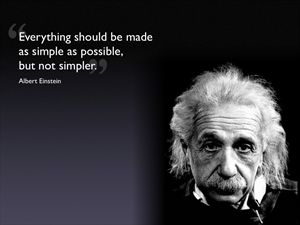Warehouse Operations: More Than Just Shipping
by Sharmi Duncan
Warehouse Operations is the heart of customer service. Products come in, products go out… or at least that what’s supposed to happen. But do you really know what’s happening within your distribution center, and how it affects your customer?
A delivery truck arrives at the distribution center. What happens next? Did the warehouse know the truck was coming in today? Do they know what’s on it? From the moment the truck bumps the dock, how long does it take to receive and put away the goods?
Having visibility to incoming goods is the first step in defining operations processes and pleasing the customer. Providing the warehouse with a receiving report that details what’s coming in, who it’s coming from, and when it’s arriving allows the warehouse team to plan for receiving rather than scrambling around whenever a truck unexpectedly arrives at the dock.
Receiving reports can be done in a variety of ways; using copies of Purchase Orders is a rudimentary method, but it’s a good starting point. If there’s a back-ordered item or a promotional item that must be received and shipped very quickly, then a receiving report will allow the warehouse to flag that product and turn it quickly to make sure the customer gets the product when it’s needed. Have you ever had to pay a fine because you failed to deliver product on time for a customer promotion? Providing visibility to what’s coming in could make all the difference!
So, the truck has arrived and the warehouse is starting to receive the goods. How are they receiving the product—by item description or SKU (stock keeping unit) number? If your warehouse uses item descriptions to manage product movement, then stop right now! Item descriptions are the worst method a warehouse can use, because often there are no controls when descriptions are entered into item master files. Item descriptions don’t match the details printed on the outsides of cartons, which forces warehouse personnel to use their best judgment or tribal knowledge for picking products. This results in picking errors.
The best method for managing product movement is a SKU numbering system; numbers don’t lie. Successful inventory management systems assign a unique SKU to each product and also to each of its variants, such as different versions or models of the same product, or different bundled packages including a number of related products.
Using a SKU numbering system will reduce the number of picking errors, which means your customers will receive the products they ordered rather than having to deal with rejecting a shipment!
So, the product has been pulled, it is loaded on the truck, and your driver is out on his daily route. The delivery is the climax of the order fulfillment process, and if everything has gone right up until this point, then the delivery can be the icing on top of the customer experience cake.
Drivers don’t just deliver product; they are the face of the company. They’re responsible for more than getting the order to the customer; they also collect payment and handle returns. In strategically focused companies, drivers are a leveraged resource for sales and customer service because they interact with customers on a daily basis. For example, using drivers to conduct surveys, to promote special items or sales, or to communicate out-of-stocks or any other company news is a great way to provide timely information and stay engaged with the customer. A lot of customer complaints are caused by a lack of communication from the vendor, so don’t wait for your Marketing department to print up a pretty flyer. A daily meeting before the drivers leave on their routes is a much quicker way to disseminate information!
Customer satisfaction is achieved by focusing on every touch-point within the organization to understand how it affects your customers. Making the sale is only part of the equation. What really matters is everything that comes after. That is the heart of the customer experience.
If you want to keep your customers (and gain new ones), it is critical that you have a strong warehouse operation that ships the right product every time, a delivery fleet that delivers on time, and a team that stays engaged with customers by listening and responding to their needs and communicating important information.


